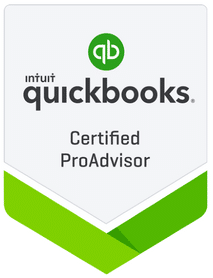- Patrick Roney
- (877) 503-8607
Follow Us :
Follow Us :
Proledge
October 30, 2013

Many small businesses forego budget creation because they don’t know where to start. It feels overwhelming to begin and daunting to keep up with over the course of the year.
If you find yourself in this category, consider the minimalist approach. Break your business’ P&L’s into five simple numbers:
These are expenses closely tied to your income. COGS is the costs that go into creating the products that a company sells; therefore, the only costs included in the measure are those that are directly tied to the production of the products. So if income grows by 10%, COGS also grows by 10%.
These are expenses that ebb and flow with production output. Variable costs can include direct material costs or direct labor costs.
These are expenses not likely to change in the foreseeable future and must be paid independent of any business activity. Your building lease is a good example.
A company’s total earnings (profit). This calculation is income minus COGS and variable and fixed expenses.
Step 1. In QuickBooks, create a P&L for a period that is representative of your business. If the business has been stable, take the last 12 months. If the business has been changing a lot, take the last 3 months.
Step 2. Export this P&L to a spreadsheet.
Step 3. Collapse the spreadsheet down to the 5 rows listed above. This is the part that requires a bit of work, because you need to identify line by line in your P&L where they fit. For instance, identify the lines in your P&L that are fixed expenses. Add them up and create a new row called “Fixed Expenses”.
Step 4. Divide your numbers appropriately so that you get to a monthly number. For instance, if the P&L you exported was for three months, divide by three.
At this point, you’ve boiled down your business to its core components. That was the hardest part. You now have these 5 magic numbers that will help you look at your business through a brand new lens.
Step 5. Now, create columns for the next 12 to 24 months and apply a growth rate to each of these numbers. Make sure that Income and COGS grow at the same rate (unless you have a specific plan to reduce your gross margins) and that Fixed Expenses don’t grow. The trickiest part is to define the growth of your Variable Expenses. When in doubt, start with 1/3 of the growth of your Income.
You now have a forecast. It will tell you a lot about your business and will allow you to know where the key levers are for profitability. To call this “forecast” a “budget”, you simply need to repeat this process once per month (or quarter) and compare your new spreadsheet to the old one.
If you want to go for an in-depth budget, Intuit’s latest QuickBooks budgeting tool offers a much-improved experience for planning full-year budgets and visualizing actual spending and income against the plan. Budget surpluses can be assigned to a variety of spending categories within the same month or rolled into the next. You’ll find less of a focus on strict monthly numbers and more of a broader view of the concept of budgeting.
Although the QuickBooks full-year budget screen appears to be somewhat complicated, it’s very easy to create, edit, and review progress against the budget. The full-year view adds more flexibility in adapting the budget to fit your circumstances, thus solving the problem of a budget in QuickBooks being too rigid to fit real-life situations,where budgets need to be flexible in order to be useful.
Whether you choose the minimalist approach or decide the devil is in the detail, one thing is certain – creating and following a budget is a healthy business habit. Budgeting forces managers to become better forecasters. It motivates managers and employees through performance evaluation. It also opens lines of communication between various levels of management since a plan – in black and white – is set in place for the year. Budgeting minimizes confusion and sets expectations.
As you get started on your 2014 budget, include your bookkeeper in the conversation and utilize them in the historical data collection to make sure you’re starting with accurate and realistic numbers. Start the year with an accurate working budget and set yourself up to make better business decisions and increase profitability in 2014.


Fill out the form below to sign up to our Blog Newsletter and we’ll drop you a line when new articles come up.
Bookkeepers.
Professional. Affordable.
ProLedge is a bookkeeping services firm.
Copyright © 2024 All rights reserved.
Hello. Can we help you?